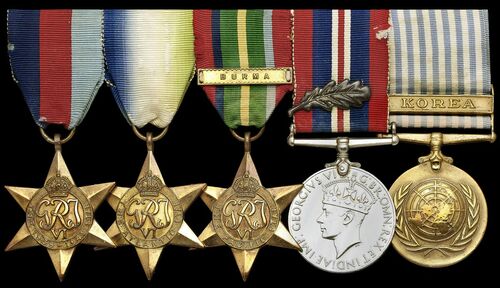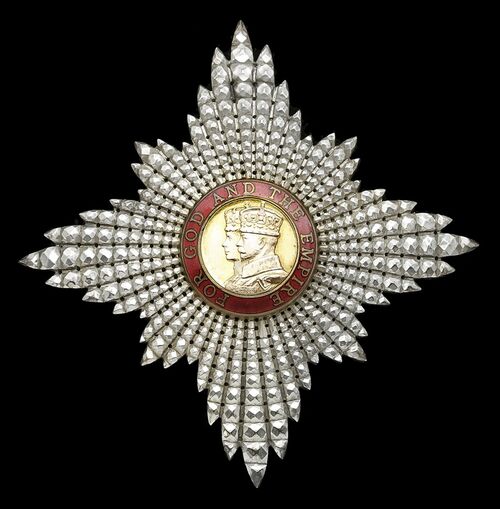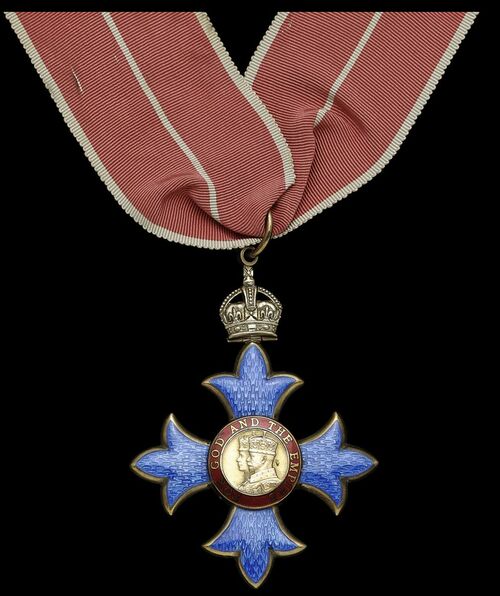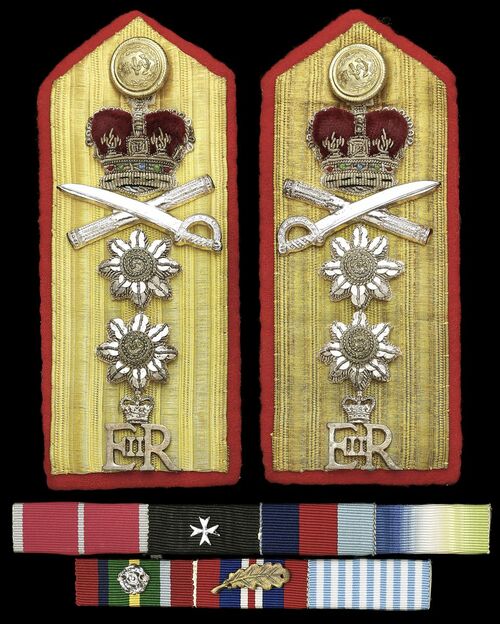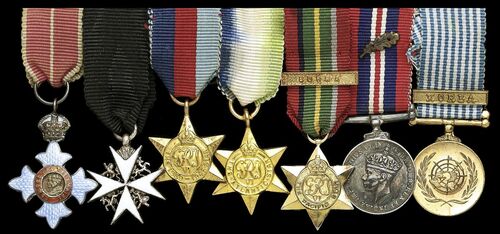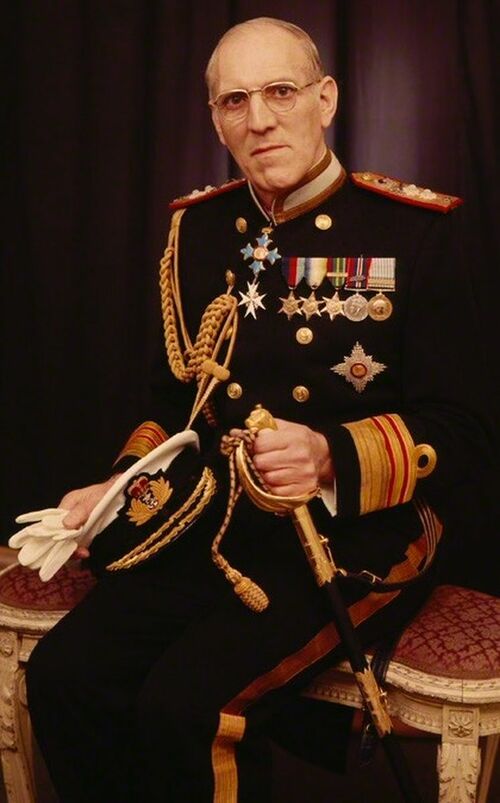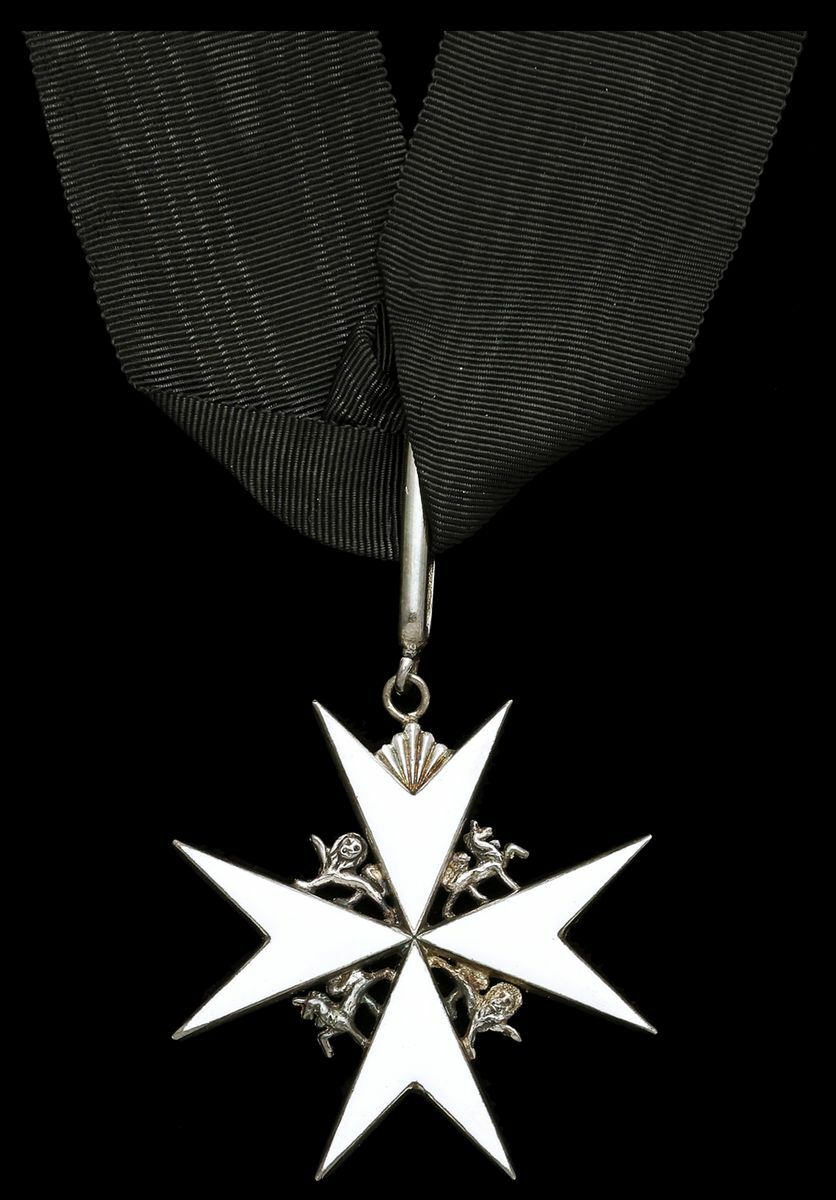Auction: 23003 - Orders, Decorations and Medals
Lot: 228
The K.B.E. group attributed to Surgeon Vice-Admiral Sir James Watt, Royal Navy, Medical Director-General of the Royal Navy who was an expert on burns, surgery and nautical medicine
The Most Excellent Order of the British Empire, K.B.E. (Military) Knight Commander’s 2nd Type set of Insignia, comprising neck Badge and breast Star, silver, silver-gilt and enamels, with full neck cravat in its Garrard & Co. case of issue; The Order of St. John of Jerusalem, Commander’s neck Badge, silver and enamel, with neck cravat in its case of issue; 1939-45 Star; Atlantic Star; Pacific Star, clasp, Burma; War Medal, with M.I.D. oak leaf; U.N. Korea 1950-54, these all unnamed as issued, very fine or better (11)
Provenance:
D.N.W. 1 March 2017.
K.B.E. London Gazette 1 Janaury 1975.
C. St. J. London Gazette 17 February 1972.
James Watt was born on 19 August 1914 in Morpeth, Northumberland, where his father Thomas was a master confectioner and his mother Sarah a teacher. Watt was educated at King Edward VI grammar school, Morpeth and studied Medicine at Durham Univeristy before qualifiying at the Royal Victorian Infirmary, Newcastle. He remained in that city before the war, becoming a house surgeon at Ashington Hospital and resident medical officer at the Princess Mary Maternity Hospital.
Commissioned Surgeon Lieutenant with the Royal Naval Volunteer Reserve in 1940, he joined the elderly cruiser Emerald, at that time based in the Indian Ocean. This ship was part of Force V, hunting the German raider Scheer, after Watt's joining she was ordered to Basra. Here Emerald was tasked with preventing a coup in Iraq which would have handed that country over to the Germans. While in the Gulf Watt's skills where called upon when an outbreak of malaria tore through the ships company laying low more than 70 men, eventually two of these men died.
Emerald suffered a collided with the cruiser, Dauntless in June 1941, causing structural damage and flooding the forward engine room. Fourteen men were left killed or missing, but Watt managed to save five of the severely wounded.
Appointed next to the lend-lease destroyer Roxborough Watt began to serve with her on North Atlantic convoy duties. Watt's skills were to be tested to the limited during convoy HX222 when Roxborough encountered severe weather. Powerful waves crushed her bridge superstructure and washed the Captain and First Lieutenant overboard. Nine others were killed and Watt left Watt as senior officer on-board with a number of injured to care for. Facing up to his new duties, he saw to the treatment of the wounded while a Canadian Sub-Lieutenant conned the ship and used hand-steering to bring her safely into St John's, Newfoundland.
Watt and the remaining ship's company were accommodated in a New Jersey hotel resort, known as "HMS Asbury", and run by the renowned millionairess Lily Lambert, who was eventually decorated by the British for her war work. After several months in the USA, and further convoy duty on the east coast, Watt was posted to the escort carrier Arbiter. Seeing more service on Atlantic convoys until Arbiter embarked 1843 Naval Air Squadron of Corsair fighter-bombers, bound for the British Pacific Fleet.
She was preparing for air strikes on mainland Japan when the atom bombs were dropped. Arbiter remained in the Far East after V-J Day when Watt treated malnourished prisoners of war and civilians whom she ferried from Hong Kong to Australia. For his distinguished service in the Far East he was mentioned in despatches.
With the end of the war and his duties in the East, Watt became a surgical registrar at the Royal Victoria Infirmary. This was not to last however as, inspired by a religious experience, he rejoined the Royal Navy in 1949. Posted to the hospital ship Maine during the Korean War and rose rapidly in his profession. Taking a role as surgical specialist in Hong Kong from 1953-1955 he then became consultant in surgery at the naval hospitals in Plymouth, Malta and Gosport. Watt eventually became the first joint professor of naval surgery to the Royal College of Surgeons and H.M.S. Haslar between 1965-1969.
Promoted to Surgeon Rear Admiral in 1969, Watt was appointed Dean of Naval Medicine and medical officer in charge of the Institute of Naval Medicine that same year, seeking to develop it into a first-class centre for research. His work focused particularly on uncovering the environmental tramua associated with divers, aircrew and submarine crew. Further promoted Surgeon Vice Admiral three years later Watt became medical director general of the Navy. It was at this point that he reorganised the naval medical service, extending its research programmes and supervising the organisation and co-ordination of surgical support for the Royal Marines.
Watt was the Queen's Honorary Surgeon from 1969-1977. He was also a member of a great many medical societies, being president of the Royal Society of Medicine from 1982-1984. Active also as a writer Watt tended towards the theme of Naval Medicine with articles such as Surgery at Trafalgar and Starving sailors: the influence of nutrition upon naval and maritime history being published between 1980-2005. Retiring to Winchester Watt later moved to Hampshire, he died there on 28 December 2009; sold together with a pair of Naval Greatcoat epaulettes, uniform riband bar and a corresponding miniature set.
Subject to 20% VAT on Buyer’s Premium. For more information please view Terms and Conditions for Buyers.
Sold for
£1,000
Starting price
£800

